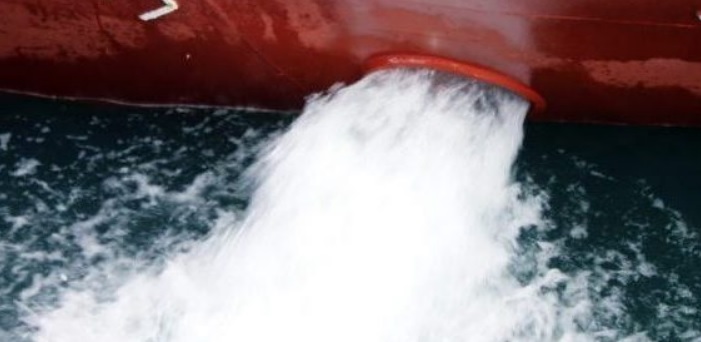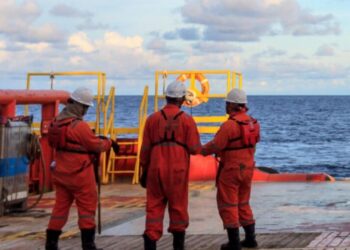The Bahamas Maritime Authority (BMA) has issued a Technical Alert to provide information on the availability of revised Ballast Water Record Books in the format specified in amendments to the International Convention for the Control and Management of Ships’ Ballast Water and Sediments, 2004 (Ballast Water Management/BWM Convention).
The BMA notes that “Ballast water” means water with its suspended matter taken on board a ship to control trim, list, draught, stability, or stresses of a ship.
Entries in the ballast water record book
Entries in the Ballast Water record book shall be made on each of the following occasions:
#1 When ballast water is taken on board from the aquatic environment (ballasting operation)
- Start time and location (port of uptake or latitude/longitude)
- Completion time and location (port of uptake or latitude/longitude and minimum depth of water during uptake)
- The identity of the tanks affected
- Estimated volume of uptake and final total quantity retained in cubic metres
- Whether conducted in accordance with the approved Ballast Water Management Plan
- Ballast water treatment method
#2 When ballast water is discharged into the aquatic environment (deballasting operation)
- Start time and location (port of discharge or latitude/longitude)
- Completion time and location (port of discharge or latitude/longitude and minimum depth of water during discharge)
- The identity of the tanks affected
- Estimated volume of discharge and final total quantity retained in cubic metres
- Whether conducted in accordance with the approved Ballast Water Management Plan
- Ballast water treatment method
#3 Whenever ballast water is exchanged, treated through internal circulation or treated in tank
Ballast water exchange
- Start time and location (latitude/longitude)
- Completion time and location (latitude/longitude)
- Minimum distance from the nearest land and minimum depth of water during the exchange or, if applicable, identify the designated exchange area in
accordance with regulation B-4.2 - Whether conducted in accordance with the Ballast Water Management Plan and state the ballast water exchange method (Sequential or Flow-through or
Dilution) used - The identity of the tanks affected
- Total quantity exchanged and final total quantity on board in cubic metres
- Treatment method for the incoming ballast water
Ballast water internal circulation for treatment or in-tank treatment
- Start time
- Completion time
- The identity of the tanks affected (identifying source and destination tanks if applicable)
- Total quantity treated (through circulation or in tank) in cubic metres
- Ballast water treatment method
#4 Uptake or discharge of ballast water from/to a port-based or reception facility
- Start time and location of uptake/discharge (state facility name)
- Completion time
- Operation carried out (whether uptake or discharge)
- The identity of the tanks affected
- Total quantity in cubic metres and final quantity retained on board
- Whether conducted in accordance with the approved Ballast Water Management Plan
- Onboard ballast water treatment method
#5 Accidental discharge/ingress or other exceptional uptake or discharge of ballast water
- Start time and location of ingress/uptake/discharge (port name or latitude/longitude)
- Completion time
- Operation carried out (whether ingress, uptake or discharge)
- The identity of the tanks affected
- Total quantity of ballast water in cubic metres
- State the circumstances of ingress, uptake, discharge or loss, the reason thereof, any treatment method used and general remarks
#6 Failures and inoperabilities of the ballast water management system
- Time and location (port name or latitude/longitude) of failure of the ballast water management system
- Operation carried out (state whether uptake or discharge)
- Description of the issue (e.g. kind of alarm or other description of circumstances)
- Time and location (port name or latitude/longitude) when the ballast water management system has been made operational
#7 Ballast tank cleaning/flushing, removal and disposal of sediments
- Time and ship’s location on commencement of ballast tank cleaning/flushing, removal or disposal of sediments (port name or latitude/longitude)
- Time and ship’s location on completion of ballast tank cleaning/flushing, removal or disposal of sediments (port name or latitude/longitude)
- Tank(s) identification (name of the ballast tanks as per the Ballast Water Management Plan)
- Discharge or disposal to a reception facility (state quantity in cubic metres and name of the facility)
- Disposal or discharge to the aquatic environment as per Ballast Water Management Plan (state quantity in cubic metres, minimum distance from the
nearest land in nm and minimum depth of water in metres)
#8 Additional operational procedures and general remarks


































































